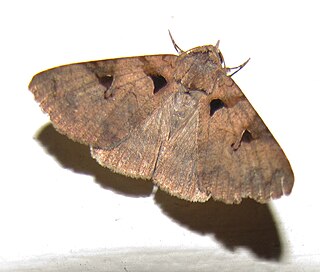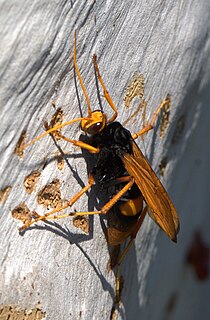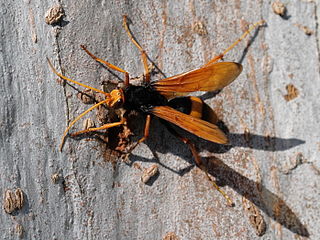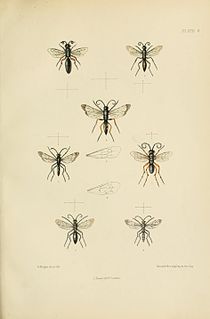
The Mediterranean Sea is a sea connected to the Atlantic Ocean, surrounded by the Mediterranean Basin and almost completely enclosed by land: on the north by Western and Southern Europe and Anatolia, on the south by North Africa, and on the east by the Levant. Although the sea is sometimes considered a part of the Atlantic Ocean, it is usually referred to as a separate body of water. Geological evidence indicates that around 5.9 million years ago, the Mediterranean was cut off from the Atlantic and was partly or completely desiccated over a period of some 600,000 years during the Messinian salinity crisis before being refilled by the Zanclean flood about 5.3 million years ago.

Ophrys sphegodes, commonly known as the early spider-orchid, is a species of sexually-deceptive orchid native to Europe and the Middle East. It is a very varied species with many subspecies recognised.

Avatha discolor is a species of moth of the family Erebidae. It is found from the Indo-Australian and Pacific tropics to as far east as Henderson Island.

Pompilus cinereus, the leaden spider wasp is the most widespread species of the Pompilus spider wasps, and throughout a large proportion of its wide distribution is the only species of Pompilus. It is the type species of the genus Pompilus and therefore of the family Pompilidae.

The Pepsinae are a subfamily of the spider wasp family, Pompilidae, including the tarantula hawks, as well as smaller species.

Dipogon subintermedius is a spider wasp from the family Pompilidae.

Cryptocheilus is a genus of spider wasps of the subfamily Pepsinae, they are found in the world's warmer regions. They vary in size from medium to large and are often strikingly coloured. The females construct multicellular nests in cavities, once built each cell is stocked with a spider, captured by the female. They are found in open habitats such as heaths, meadows and forest edges.

Cryptocheilus bicolor is a large, strikingly coloured spider wasp from Australia.
Cryptocheilus notatus is the largest species of spider wasps (Pompilidae) to be found in Great Britain reaching up to 18mm in length.

Cryptocheilus australis, the golden spider wasp, is an Australian pepsid spider wasp that was accidentally introduced to New Zealand around 1960.
Arachnospila anceps is one of the more common spider wasps of western Europe.
Cryptocheilus elegans is a species of spider wasp in the genus Cryptocheilus found in Europe.

Chaetopelma olivaceum is a species of mygalomorph spider, belonging to the tarantula family (Theraphosidae). It has many synonyms, including Ischnocolus jerusalemensis. Common names used include black furry, black tarantula and Middle East gold.
Anoplius infuscatus is a species of spider wasp found mainly in Eurasia.

Anoplius concinnus is a widespread Eurasian species of spider wasp.

Tachypompilus ferrugineus, the rusty spider wasp, red-tailed spider hunter, or sometimes red-tailed spider wasp is a species of spider wasp from the Americas. It preys mainly on wandering spiders, especially wolf spiders.

Pepsis grossa is a very large species of pepsine spider wasp from the southern part of North America, south to northern South America. It preys on tarantula spiders, giving rise to the name tarantula hawk for the wasps in the genus Pepsis and the related Hemipepsis. Only the females hunt, so only they are capable of delivering a sting, which is considered the second most painful of any insect sting; scoring 4.0 on the Schmidt sting pain index compared to the bullet ant's 4.0+. It is the state insect of New Mexico. The colour morphs are the xanthic orange-winged form and the melanic black winged form. In northern South America, a third form, known as "lygamorphic", has a dark base to the wings which have dark amber median patches and a pale tip.

Tetragnatha montana, commonly known as the silver stretch spider, is a species of long-jawed orb weaver from the family Tetragnathidae that has a Palearctic distribution. It preys mostly on flies and mosquitoes. The name silver stretch spider refers to its shiny metallic colour and its habit of extending its legs into a stick like shape.

Pepsini is a tribe of spider wasps in the family Pompilidae. There are about 11 genera and at least 40 described species in Pepsini.















